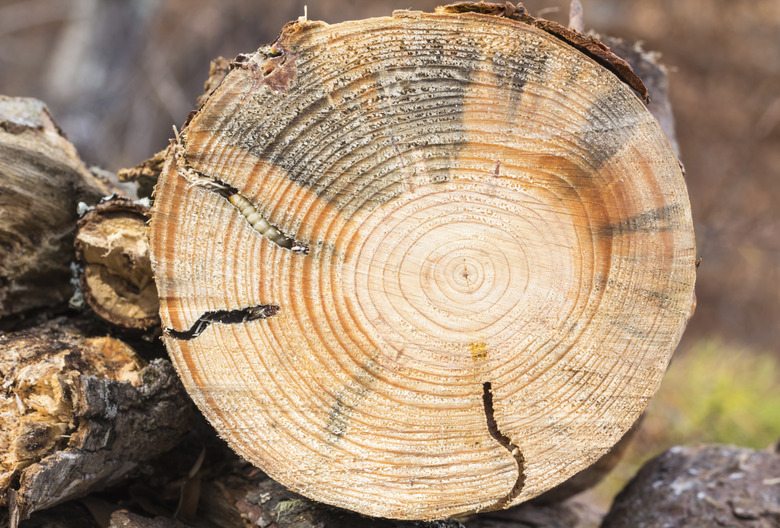How To Treat Tree Borers
Trees serve as hotels for all kinds of critters, from desirable birds to undesirable insects who often pass their larval youth hidden away inside tree bark. When they break-and-enter, the larvae hatch from their eggs and bore holes into tree trunks and branches. The damage done by borers can kill the tree.
Anything But Boring
Tree-boring insects are only looking for a bed-and-breakfast site to pass their larval stage, but they do serious damage to ornamental trees. Borers are the immature stage of certain moths and beetles that dig their way through the living wood of a tree, destroying tissues the tree needs to store water and transport sap. The damage from the tunnels alone can girdle and eventually kill the tree, and the holes represent the perfect opening for opportunistic infections.
Strong Trees Are Safe Trees
Most species of borer cannot successfully attack healthy, strong trees in their natural environment. Trees subject to infection are those that are stressed by too much or too little water, transplant shock, other disease, injury or lack of proper care. When the borers leave the larval stage, the adult borers emerge from the infested trees, mate, then fly off to lay eggs on another tree. The insects choose the trees in which they lay eggs by sensing the volatile chemicals that stressed trees release, notes University of Kentucky College of Agriculture.
Treat Me Right
If you want to protect your trees from a borer infestation, think ahead and plant species native to or adapted to your region. Water the trees appropriately, especially during the months after transplant when regular watering is essential. Protect the trees from mechanical injuries, and wrap the trunks, if necessary, to prevent sunburn. Inspect your trees frequently to monitor their health, and replace them once they begin to decline. If you want to prune, do it in late fall through early winter; late winter through late summer is the period that borers are most active. Keep your eye out for borer holes so you can detect a borer attack early, before it becomes serious.
Clearwing Borers
Several species of borers attack landscape trees. One common type is the clearwing borer. The adult, a delicate moth, eats only nectar and does not damage trees. The fat white larvae damage many species of trees and shrubs, including flowering fruit trees. Look for off-color leaves, dying branch tips and crown dieback. Most telling is the coarse brown frass that looks like sawdust that comes out of the cracks in the bark. A feeding woodpecker is another indication the tree is under attack from borers. You can only treat these borers during a very brief period: after the eggs hatch but before the larvae crawl off to enter the tree. The timing depends on the species of clearwing. The most effective pesticides — bark sprays with pyrethroids — are only available to professionals.
Flatheaded Borers
Another common type of borer is termed the flatheaded borer because of its shortened first segment. These are shiny, metalic-colored beetles. Their larvae girdle branches with winding tunnels beneath the bark. Look for D-shaped holes where the adults emerge. Flathead larvae do not crawl out of their eggs to the tree crevice, but instead chew right through the egg into the tree. The same types of insecticide are effective against these larvae, but the product must be sprayed onto the tree before the eggs are laid to be effective.
